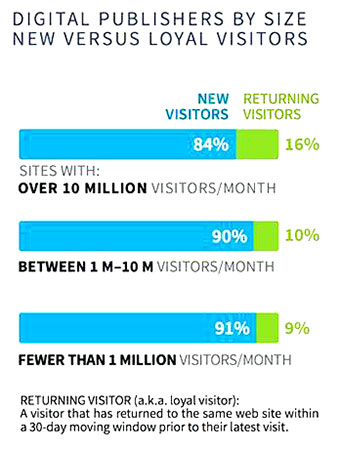[responsive] [/responsive]The number of readers that access news via individual brand sites is dropping, according to Davide Ruggiero in Talking New Media. In other words, fewer people are coming to the news site to discover the news, but are discovering the news on social and other platforms and being driven to the site from there.
[/responsive]The number of readers that access news via individual brand sites is dropping, according to Davide Ruggiero in Talking New Media. In other words, fewer people are coming to the news site to discover the news, but are discovering the news on social and other platforms and being driven to the site from there.
“According to the latest digital news report published by the Reuters Institute, at the beginning of 2014 about 50% of readers still accessed news via individual brands,” Ruggiero writes. “I think this percentage will halve in the next three years because of modest brand loyalty and powerful competitive strategies.”
According to the Pew research, 31% of readers on tablets or computer are coming to news sites via search engines, while smartphone users are increasingly coming from social networks or content aggregating apps or sites.
“While legacy brands know their content better than anyone else, search engines, social networks and even aggregators capture more and more readers’ attention because they know their audience better (eg through personal data, favourites, cookies etc) and pick stories from a wide variety of non-proprietary content,” explains Ruggiero.
This means that traditional brands need to rethink how they are acquiring new readers, especially those coming to them via smartphone.
“Digital newspapers, which feature time-sensitive news, need to strengthen their social exposure, working extremely hard on referral programmes and helping news feeds break down their content as accurately as possible,” advises Ruggiero. “More disruptively, traditional brands could integrate aggregation features into their product, leveraging their highest competence – the ability to curate news.
“At the other end, media brands with lifestyle or seasonal content, which has a longer shelf life, should focus more on optimising their content for search engines because most of their non-loyal readers will come from the likes of Google, Yandex and Baidu,” Ruggiero continues.
Unlike a printed news product that captures and holds attention for an entire issue, brand loyalty is often overlooked in favor of expediency and ease of access in the digital news arena. And with licensing and repurposing of content, readers often can access the same story in several different places, making it even more important for traditional media to think outside their own digital products.
